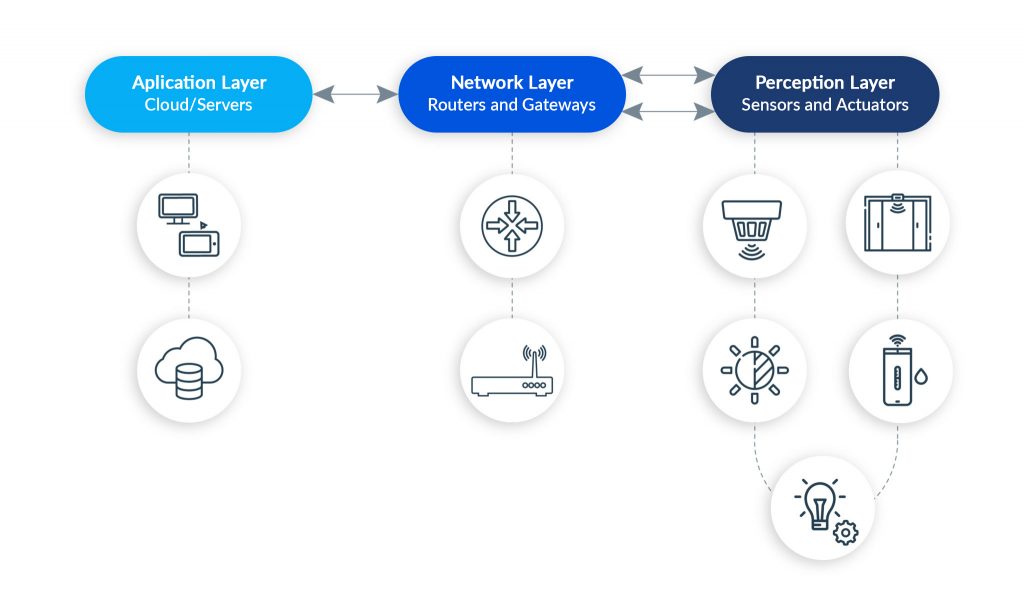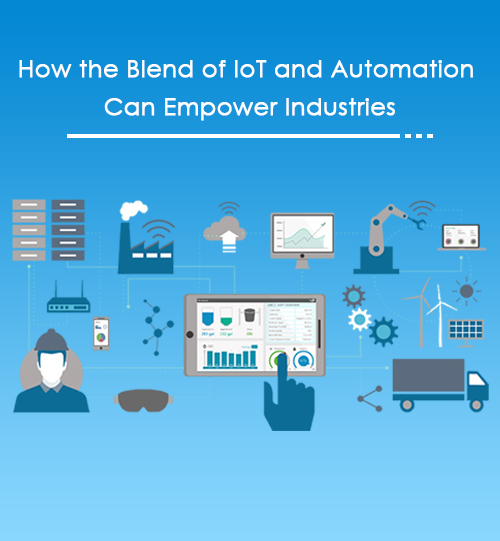The global population has been increasing by leaps and bounds, and so is their electricity demand. To fulfill this demand, power generation companies and utilities are continuously improving their existing working methodologies and machinery. Thus, they are able to elevate the overall plant efficiency, which in turn, enables utilities to provide electricity to a wide area network.
Programmable Logic Controllers (PLCs) and SCADA systems have enabled these companies to assess the condition and performance of their power plants’ tools for a long time. However, these systems are less interoperable and don’t offer consumption pattern monitoring of energy consumed by the end consumers.
The emergence of IoT in the energy sector has also resulted in the advent of smart IoT-based energy solutions. These solutions underpinned with IoT sensors and telemetry capabilities offer enormous functionalities to the energy sector in terms of operational optimization, consumption pattern monitoring, and asset performance management.
Smart Energy Solutions
Smart energy solutions are made up of devices like the smart grid and smart meters that are used to garner relevant data. This data comprises factors related to electricity flow and can vary from equipment performance to energy utilized by the end-users. By analyzing this data, the energy companies can make informed decisions to manage electricity flow in three processes, including power generation, transmission, and distribution.
IoT plays a vital role in maintaining the power flow in all these three processes. It allows electricity companies to manage the electricity supply at peak hours and eliminate wastage.
Let’s dive deep into the benefits of the Internet of Things in all these processes.
Power Generation –
Power plant machinery must be efficient enough to minimize electricity wastage. However, power plants undergo high levels of inefficiency and unreliability due to:
- Use of old and malfunctioning equipment
- Improper operations and maintenance (O&M) procedures.
- Incorrect utilization of historical data related to equipment.
These factors considerably affect the efficiency of machinery and equipment. With the help of IoT app developers, power generation companies create cost-effective solutions to enhance their O&M tasks, thus improving the lifetime of the equipment. By continuously tracking the performance of assets, point of failure and required maintenance time can be estimated accurately.
Uptime Monitoring:
Uptime monitoring is the time during which machinery or equipment runs. While the machine is working, different parameters are considered to assess its performance and condition. These parameters help companies to estimate the machine breakdown time and even schedule predictive, condition, or risk-based maintenance tasks.
Downtime Monitoring:
The time in which equipment is not running or under maintenance is referred to as downtime. By using the historical data of equipment garnered through different integrated sensors, appropriate repairs and maintenance can be done to get it ready for operation.
By simultaneously assessing the uptime and downtime of various machines in a power plant, the availability of equipment can be determined. Thus, the standby machines can be used during peak hours to fulfill the extra demand. A few other benefits of monitoring equipment availability are:
- Minimized maintenance costs
- Improved efficiency and reliability of assets
- Fast inspection and detection of sources of failure
- Elimination of unplanned downtime and emergency repairs
Power Transmission –
The efficiency of power transmission systems decreases after a prolonged duration of usage. Additionally, these power grid systems often run along with power plants having high emission rates and low fuel efficiency that result in reduced efficacy of power transmission systems.
Nowadays, these conventional power grids have been supplanted with upgraded IoT-based smart grids. The new smart grids provide quick remote control on multiple electricity transfer parameters such as voltage, frequency, ramp rate, etc. Moreover, they offer a two-way dialogue system that enables utilities and customers to transmit data and electricity quickly.
Key benefits that an advanced transmission system yield with smart grids are:
Renewable Energy Management:
The energy produced from renewable resources is known as variable power, which varies with change in environmental conditions. A smart transmission system can identify these variations and also balance the power supply by extracting energy or electricity from conventional power plants.
Reduced Operational Costs:
Smart grids complemented with distribution systems can gauge the energy consumption in different locations and the duration of peak power consumption. Based on this data, utilities can choose the best possible time to run “peaking plants” to manage power supply when there is a peak demand for electricity. Since this reduces the usage of less efficient peaking plants, the operational cost is also reduced considerably.
Asset Management:
A transmission system comprises transformers, substations, and transmission lines. These assets and equipment develop faults owing to overloading and continuous operation. So, different IoT sensors are used to examine various factors related to the working of the equipment and identifying safety hazards as well as vulnerable components. This improves the maintenance tasks along with the life of transmission equipment.
Power Distribution –
IoT is improving the distribution services and customer experiences using smart meters and smart grids. A smart meter is an IoT application that transfers power consumption data of a home to the utility provider. Customers can also access the data through a web app or even from television.
Besides, smart meters foster the development of smart distribution systems, offering various benefits in the field of:
Supply Rerouting and Restoring:
Due to unwanted environmental conditions, transmission systems and assets can get damaged, which averts the electricity flow in certain regions. It can take a lot of time to recover the breakdown and restore the electricity supply in a location. However, the blend of smart meters and smart grids can find a separate path to supply electricity and help utilities to reroute the power supply to the area suffering from a blackout.
Energy Management Solutions for Home:
Smart appliances at home can exchange data with smart meters to store and analyze data related to energy consumption. Furthermore, smart meters share this data with a centralized platform that can even be accessed from a TV. This data can be utilized by consumers to manage electricity consumption and thus reduce the bills.
Final Words
Smart energy solutions are improving the power generation, transmission, and distribution processes. IoT adoption in the energy sector has fueled the emergence of more reliable and efficient systems that reduces the power flow from power plants to end consumers. Thus, utilities are able to boost the reach of their electricity network to more remote locations and suffice the electricity demand of the continuously soaring global population.
If you also want to add intelligence to your power supply business, we suggest you investing in IoT app development services to create a smart energy solution and drive your business growth.















